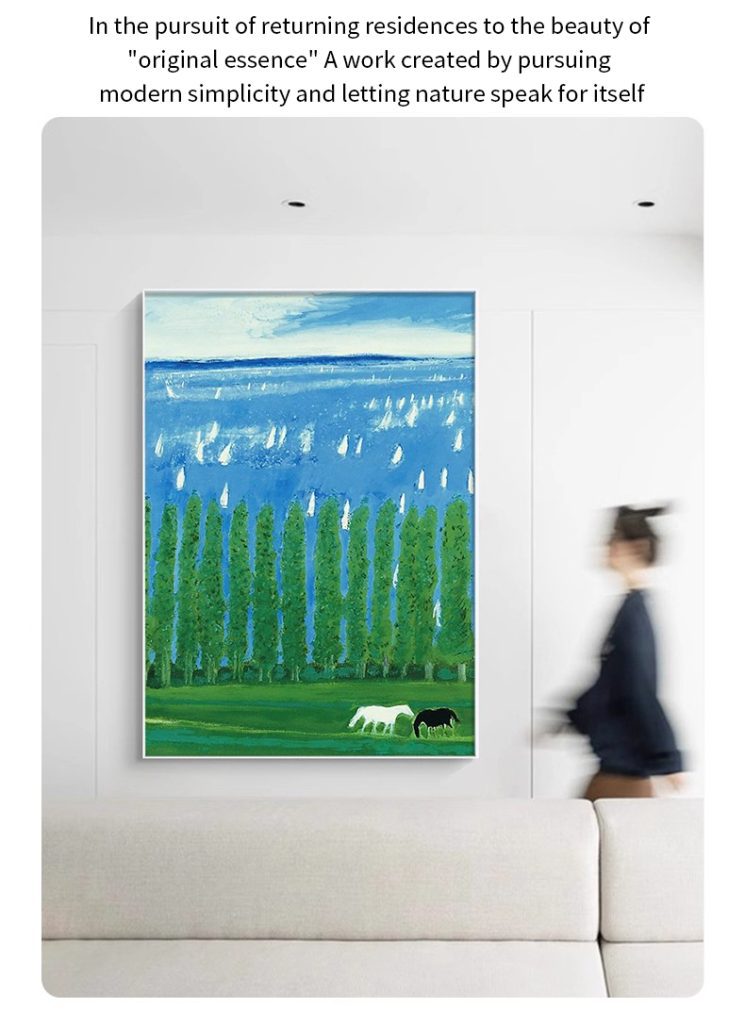Key Considerations for Displaying Hand-Painted Oil Art in Galleries
Creating an impactful exhibition of hand-painted oil art requires careful planning to ensure each piece is showcased in a way that highlights its unique qualities while contributing to a cohesive narrative. Unlike other mediums, oil paintings demand specific attention to lighting, spacing, and contextual placement to preserve their texture, depth, and emotional resonance. By focusing on these elements, galleries can elevate the viewer’s experience, fostering a deeper connection between the audience and the artwork.
Optimizing Lighting to Enhance Texture and Detail
Proper lighting is critical for revealing the intricate details and rich textures of hand-painted oil art. Oil paintings often feature thick impasto brushstrokes, subtle color transitions, and layered glazes that require directional, high-quality light to be fully appreciated. Natural light is ideal for showcasing these qualities, as it brings out the warmth and depth of pigments without altering their true colors. When displaying artworks near windows, galleries should use sheer curtains or blinds to diffuse harsh sunlight, preventing fading and ensuring consistent illumination throughout the day.
In spaces where natural light is limited, artificial lighting must be carefully chosen to mimic its effects. LED spotlights with a color rendering index (CRI) of 90 or higher are recommended, as they accurately reproduce colors and minimize heat emission, which could damage delicate oil layers over time. These lights should be positioned at a 30- to 45-degree angle to the artwork to create shadows that emphasize texture and dimension. Avoid overhead fluorescent lighting, which can flatten the appearance of paintings and distort their hues.
Dimmable lighting systems offer flexibility, allowing galleries to adjust brightness based on the time of day or the specific needs of an exhibition. For example, a dramatic, high-contrast piece might benefit from stronger lighting, while a soft, impressionistic work could be displayed under gentler illumination to maintain its dreamy quality. By tailoring the lighting to each artwork, galleries can ensure every detail is visible without overwhelming the viewer.
Creating Spatial Harmony Through Thoughtful Arrangement
The arrangement of hand-painted oil art within a gallery space significantly impacts how viewers engage with the exhibition. A well-planned layout guides the audience through a narrative, encouraging them to pause, reflect, and move between pieces in a natural flow. Start by considering the scale of the artworks—larger paintings should be placed at eye level or slightly above to serve as focal points, while smaller works can be grouped together to create visual interest without competing for attention.
When grouping multiple pieces, look for thematic or stylistic connections that create a sense of dialogue between the artworks. For example, a series of landscapes painted in different seasons could be displayed in a chronological sequence, inviting viewers to explore the progression of time. Alternatively, contrasting styles—such as a realistic portrait alongside an abstract expressionist piece—can provoke thought and spark conversations about artistic interpretation.
Negative space, or the empty areas between artworks, is equally important. Crowding too many paintings into a small space can make the exhibition feel chaotic and overwhelming, while excessive empty walls might dilute the impact of individual pieces. Aim for a balance that allows each artwork to breathe while maintaining a cohesive visual rhythm. Use furniture, plants, or architectural features like columns or alcoves to frame the art and create natural stopping points for viewers.
Contextualizing Artworks to Deepen Viewer Engagement
Providing context for hand-painted oil art enriches the viewer’s understanding and appreciation of the pieces on display. This can be achieved through informative labels, curatorial statements, or interactive elements that invite audiences to explore the stories behind the artworks. Labels should be placed discreetly near each piece, offering essential details such as the artist’s name, title, medium, and year of creation without distracting from the visual experience.
For more complex or conceptual works, consider including brief descriptions that explain the inspiration, techniques, or themes explored in the painting. For instance, a label for an oil artwork depicting a historical event might describe the artist’s research process or the symbolic elements included in the composition. These insights help viewers connect with the artwork on a deeper level, transforming a casual observation into a meaningful interaction.
In addition to written context, galleries can use technology to enhance engagement. Audio guides, smartphone apps, or QR codes linked to multimedia content—such as interviews with the artist or videos showing the painting process—can provide a multi-sensory experience that appeals to diverse audiences. For group exhibitions, a central curatorial statement can tie together disparate pieces, explaining how they collectively address a broader theme or question.
Interactive installations, such as a space where visitors can try their hand at oil painting or a digital display showing the evolution of a artwork from sketch to finished piece, can also deepen engagement. These elements make the gallery visit more memorable and encourage visitors to return for future exhibitions.
Elevating the Gallery Experience Through Attention to Detail
Displaying hand-painted oil art in a gallery is an art form in itself, requiring a blend of technical knowledge, creativity, and empathy for the viewer’s perspective. By optimizing lighting to highlight texture, arranging artworks to create spatial harmony, and contextualizing pieces to deepen engagement, galleries can transform exhibitions into immersive experiences that resonate long after the visit ends. These efforts not only honor the craftsmanship of the artists but also foster a vibrant cultural community where art is celebrated and understood.
